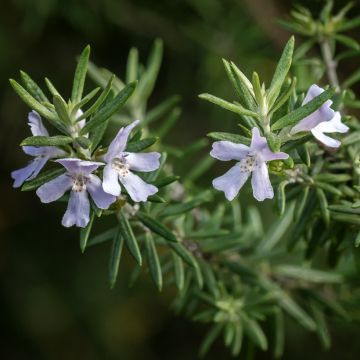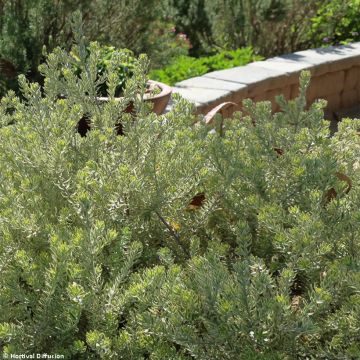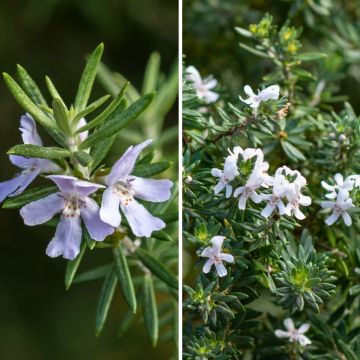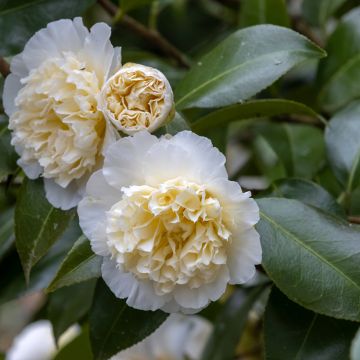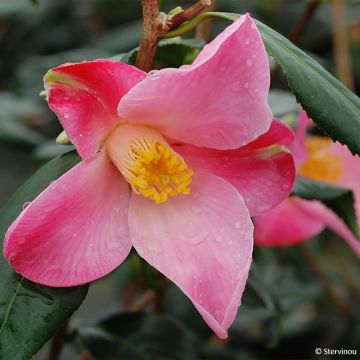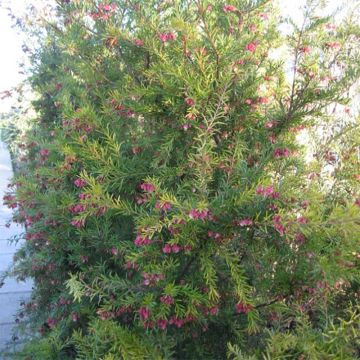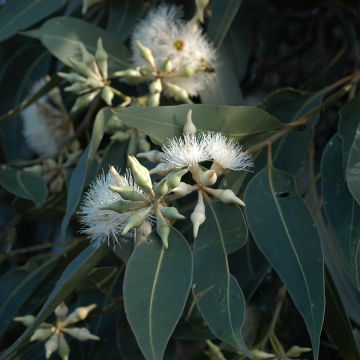

Westringia fruticosa Mundi


Westringia fruticosa Mundi


Westringia fruticosa Mundi
Westringia fruticosa Mundi
Westringia fruticosa Mundi
Coastal Rosemary, Australian Rosemary, Victorian Rosemary
This plant carries a 24 months recovery warranty
More information
We guarantee the quality of our plants for a full growing cycle, and will replace at our expense any plant that fails to recover under normal climatic and planting conditions.
From €5.90 for pickup delivery and €6.90 for home delivery
Express home delivery from €8.90.
Delivery to Corse prohibited: UE law prohibits the import of this plant from mainland France to Corse as part of the fight against Xylella fastidiosa. Please accept our sincere apologies.
More information
Does this plant fit my garden?
Set up your Plantfit profile →
Description
Westringia fruticosa Mundi comes from a shrub formerly named Westringia rosmariniformis, commonly known as Australian rosemary due to its resemblance to the emblematic shrub native to the Mediterranean scrublands. This discreetly elegant shrub belongs to the same Lamiaceae family, also has evergreen leaves in a needle-like shape, with a green-grey colour and a white underside, and produces small bilabiate flowers. But those of this 'Mundi' variety are white and they bloom from April to September. This soft shrub forms a well-spread and dense ground cover, to be reserved for coastal areas. But as it adapts very well to pot cultivation in cold regions, it will bring a touch of Mediterranean flair to the terrace throughout the summer season before being stored frost-free in winter.
Westringia fruticosa is native to eastern Australia and southern New South Wales. It is a plant that prefers well-drained and dry, rather acidic soil. This shrub has a rounded and slightly spreading habit, supported by stiff square-sectioned branches. Its growth is quite fast in moist soil. An adult specimen will reach an average of 1.2 m (4 ft) in all directions, but depending on the richness and freshness of the soil, it can reach 2 m (6 ft 6 in) or even more in a favourable climate.
The 'Mundi' variety differs from the type species by its very spreading habit, forming a perfect ground cover. This small shrub will not exceed 40 to 50 cm (16 to 20 in) in height with a spread of 1.5 m (4 ft 11 in). Its evergreen foliage in winter is composed of very narrow, linear leaves, measuring 1.5 to 2.5 cm (0.6 to 1 in) in length. They are a bit stiff, but less leathery than rosemary leaves and arranged in whorls of 3 to 5. Their colour is a dark green with a slightly greyish hue on the top and white-felted on the underside. Flowering occurs from April to September: the white bilabiate flowers are solitary and appear at the axils of the leaves, at the terminal part of the branches. The diameter of the flower varies from 8 mm (0.3 in) to 15 mm (0.6 in) and the flowering stands out more for its duration than for its abundance. 'Mundi' appreciates full sun and, like other Westringias, it is not very hardy: down to -5 °C (23 °F) approximately, provided that the soil is well drained.
Australian Rosemary is elegant, tolerant of soil conditions, and resistant to drought. It can be associated with all kinds of shrubs from mild climates. It will thus make a perfect border for a plant bed, planted with "Mimosas" (Acacia) like the very pretty Acacia pravissima with its lemon-yellow flowers that precede those of 'Mundi'. Callistemons will also be part of the party, of course, with their stunning brush-like flowering in vibrant colours, as well as the beautiful Erythrina crista-gallii Compacta with its coral-red flowers.
Report an error about the product description
Westringia fruticosa Mundi in pictures
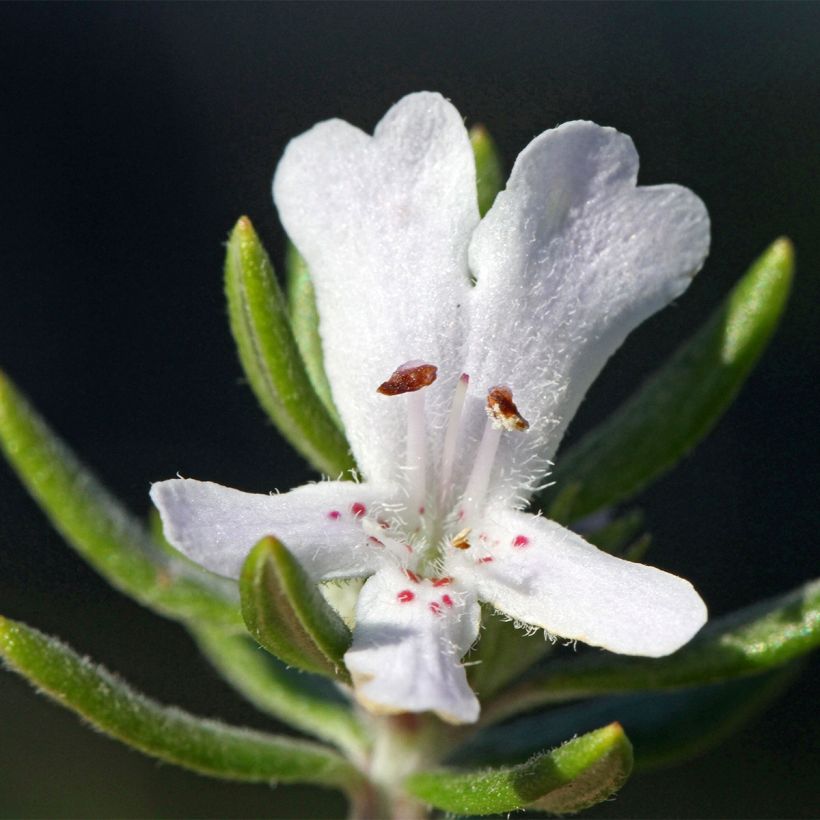





Plant habit
Flowering
Foliage
Botanical data
Westringia
fruticosa
Mundi
Lamiaceae
Coastal Rosemary, Australian Rosemary, Victorian Rosemary
Cultivar or hybrid
Other Westringia Rosemary
Planting and care
Westringia fruticosa 'Mundi' is preferably planted in spring after the last frost, in a very sunny location. It prefers a soil with an acidic to neutral pH that is sandy, gravelly, poor, and very well drained, but ultimately proves to be not very demanding in terms of soil, even tolerating the presence of limestone quite well. In regions where the soil and subsoil are limestone, it is advisable to dig a large hole measuring 60 cm (24 in) in all directions, which will be filled with heath soil or peaty compost and non-limestone sand. Growing it in a pot allows for better control of the substrate and for storing the plant frost-free in areas with borderline hardiness (down to -5/-6 °C (23/21.2 °F) for a well-established plant). Potting soil for Mediterranean plants is also well suited for container or ground cultivation.
Westringias are drought-tolerant plants once well established: monitor watering during the first 2 summers; this will become optional, or even unnecessary, later on. Like lavenders and rosemarys, these shrubs sometimes appreciate being forgotten rather than pampered. Regular, but spaced-out watering in summer helps support flowering and maintain a more decorative appearance for this shrub. In the ground, they appreciate the presence of a thick mulch layer and the addition of fertiliser for flowering shrubs if the soil is very poor.
It tolerates pruning well, even quite severe pruning, although this is absolutely not necessary for this ground cover cultivar. To maintain a dense habit, perform annual pruning in March or at the end of flowering.
Planting period
Intended location
Care
This item has not been reviewed yet - be the first to leave a review about it.
Evergreen shrubs
Haven't found what you were looking for?
Hardiness is the lowest winter temperature a plant can endure without suffering serious damage or even dying. However, hardiness is affected by location (a sheltered area, such as a patio), protection (winter cover) and soil type (hardiness is improved by well-drained soil).

Photo Sharing Terms & Conditions
In order to encourage gardeners to interact and share their experiences, Promesse de fleurs offers various media enabling content to be uploaded onto its Site - in particular via the ‘Photo sharing’ module.
The User agrees to refrain from:
- Posting any content that is illegal, prejudicial, insulting, racist, inciteful to hatred, revisionist, contrary to public decency, that infringes on privacy or on the privacy rights of third parties, in particular the publicity rights of persons and goods, intellectual property rights, or the right to privacy.
- Submitting content on behalf of a third party;
- Impersonate the identity of a third party and/or publish any personal information about a third party;
In general, the User undertakes to refrain from any unethical behaviour.
All Content (in particular text, comments, files, images, photos, videos, creative works, etc.), which may be subject to property or intellectual property rights, image or other private rights, shall remain the property of the User, subject to the limited rights granted by the terms of the licence granted by Promesse de fleurs as stated below. Users are at liberty to publish or not to publish such Content on the Site, notably via the ‘Photo Sharing’ facility, and accept that this Content shall be made public and freely accessible, notably on the Internet.
Users further acknowledge, undertake to have ,and guarantee that they hold all necessary rights and permissions to publish such material on the Site, in particular with regard to the legislation in force pertaining to any privacy, property, intellectual property, image, or contractual rights, or rights of any other nature. By publishing such Content on the Site, Users acknowledge accepting full liability as publishers of the Content within the meaning of the law, and grant Promesse de fleurs, free of charge, an inclusive, worldwide licence for the said Content for the entire duration of its publication, including all reproduction, representation, up/downloading, displaying, performing, transmission, and storage rights.
Users also grant permission for their name to be linked to the Content and accept that this link may not always be made available.
By engaging in posting material, Users consent to their Content becoming automatically accessible on the Internet, in particular on other sites and/or blogs and/or web pages of the Promesse de fleurs site, including in particular social pages and the Promesse de fleurs catalogue.
Users may secure the removal of entrusted content free of charge by issuing a simple request via our contact form.
The flowering period indicated on our website applies to countries and regions located in USDA zone 8 (France, the United Kingdom, Ireland, the Netherlands, etc.)
It will vary according to where you live:
- In zones 9 to 10 (Italy, Spain, Greece, etc.), flowering will occur about 2 to 4 weeks earlier.
- In zones 6 to 7 (Germany, Poland, Slovenia, and lower mountainous regions), flowering will be delayed by 2 to 3 weeks.
- In zone 5 (Central Europe, Scandinavia), blooming will be delayed by 3 to 5 weeks.
In temperate climates, pruning of spring-flowering shrubs (forsythia, spireas, etc.) should be done just after flowering.
Pruning of summer-flowering shrubs (Indian Lilac, Perovskia, etc.) can be done in winter or spring.
In cold regions as well as with frost-sensitive plants, avoid pruning too early when severe frosts may still occur.
The planting period indicated on our website applies to countries and regions located in USDA zone 8 (France, United Kingdom, Ireland, Netherlands).
It will vary according to where you live:
- In Mediterranean zones (Marseille, Madrid, Milan, etc.), autumn and winter are the best planting periods.
- In continental zones (Strasbourg, Munich, Vienna, etc.), delay planting by 2 to 3 weeks in spring and bring it forward by 2 to 4 weeks in autumn.
- In mountainous regions (the Alps, Pyrenees, Carpathians, etc.), it is best to plant in late spring (May-June) or late summer (August-September).
The harvesting period indicated on our website applies to countries and regions in USDA zone 8 (France, England, Ireland, the Netherlands).
In colder areas (Scandinavia, Poland, Austria...) fruit and vegetable harvests are likely to be delayed by 3-4 weeks.
In warmer areas (Italy, Spain, Greece, etc.), harvesting will probably take place earlier, depending on weather conditions.
The sowing periods indicated on our website apply to countries and regions within USDA Zone 8 (France, UK, Ireland, Netherlands).
In colder areas (Scandinavia, Poland, Austria...), delay any outdoor sowing by 3-4 weeks, or sow under glass.
In warmer climes (Italy, Spain, Greece, etc.), bring outdoor sowing forward by a few weeks.

































